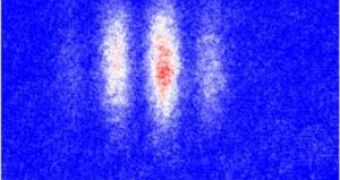The quantum world is full of surprises, unexpected behaviors and facts that seem to contradict the logic of the macroscopic world. A new method of studying atom interferometry has observed such weird behaviors of atoms, recreating a famous experiment originally done with light while also making the atoms do things that light just won't do.
Some of these seemly impossible results are atoms acting like waves and appearing in two places at once, as well as a new technique which could find practical applications in quantum computers.
Physicists at the National Institute of Standards and Technology (NIST) were able to reproduce the "double-slit" experiment in which light is directed through two separate openings and the two resulting beams interfere with each other, creating a striped pattern. This proves the wave properties of light and the fact that atoms too can be made to behave like particles and waves, alternatively.
The scientists trapped 20,000 ultracold rubidium atoms with optical lattices, a lacework of light created by three pairs of infrared laser beams that forms an array of energy "wells," looking like an egg carton, that trap the atoms.
When one atom is placed in each site of the wider lattice and the lasers are turned off upon the activation of the finer lattice, each site splits into two wells, located at a distance of 400 nanometers. This makes the atom assume a superposition situated in two places simultaneously.
This kind of interferometry can be applied to a wide variety of fields, including astronomy, fiber optics, optical metrology, oceanography, seismology and various studies of quantum mechanics.
The new NIST experiment enabled the scientists to measure the degree to which they had exactly one or exactly two atoms in a single site, and to controllably make exactly two atoms interact.
These capabilities are very important in studying both one-dimensional waves such as time varying signals, or to multi-dimensional waves such as coherent images produced by laser illumination, which could have applications in making a quantum computer that stores information in individual neutral atoms.

 14 DAY TRIAL //
14 DAY TRIAL //